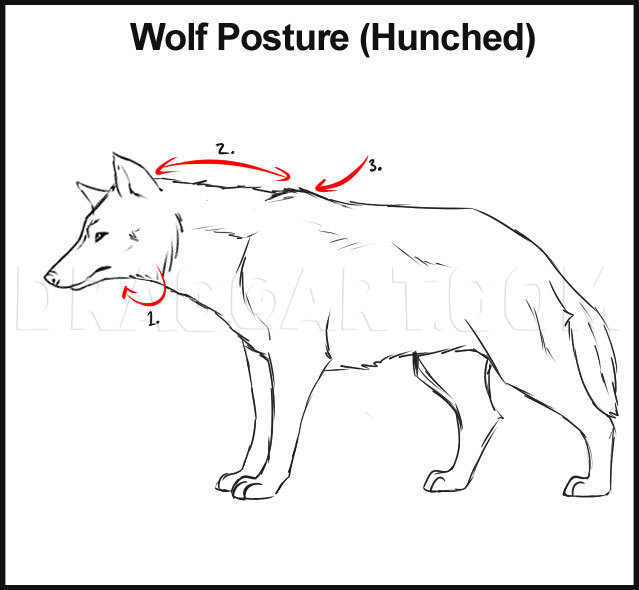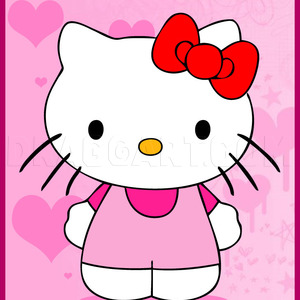1
This wolf posture is based on wolves that are standing in a normal posture. This would also fit for wolf characters that have a noble, mighty, or leader quality. 1, the neck is upright and sturdy, this is fairly important when drawing a wolf in a nor
2
A very important posture of the wolf is “hunched”. This applies to canines that are preying, running, or having a powerful force of pressure blowing at them (storm, wind, snow). The neck curves outward into the base of the head. The fur surroundi
3
Now, I know lots of canine artists have problems with drawing the paws and legs of a wolf overall. People tend to draw the arm connecting to the paw, perfectly straight and inaccurate. To fixate this problem, add a slight bump (in reality called the
4
Here is some different types of noses that you may want to choose for your wolf drawing. There is front view, 3/4 view, and side view.
5
Four different eyes to choose from here. I sort of took my time drawing out these eyes because the eyes of a wolf is one of the more important aspects of these animals. The two top eyes are sketches of a wolf eye from the side, and 3/4 view. The two
6
1, a bit of the side of the ear overlaps the inner side of the ear. This is important when viewing a wolf from a slight ¾ view. 2, you should see bits of fur visible when looking at a wolf from this view. It usually protrudes from the ear. 3, the ba
7
1, drawing the mouth of a wolf can be slightly difficult because of the mistakes on making it look like a deer's snout. The ¾ lower jaw should be pushed back to where it's aligned with the first nostril. Also, shade the mouth a bit darker as well. 2
8
Let's finally get started shall we? First draw the shapes for the heads, and then add the shapes for the muzzles, or snouts. Add the facial guidelines and the lining for the ears.
9
You will now begin sketching out the snouts in detail like you see here, and then add the lining for the eyes. Once that is done, draw in the nose shape.
10
Okay, sketch out the shapes of the furry head paying close attention to the cheeks, and neck. Finish drawing in the eyes, and then add some detailing on the brow of the wolf. AS for the wolf above, begin sketching out the ears, cheeks, muzzle, neck,
11
For your last drawing step, all you have to do is finish sketching out the head, and ears like so, and then finish sketching out the necks. Add the detailing for the fur, and then start erasing all the lines and shapes that you drew in step one.
Comments 0
Details
September 3, 2010
Description: Well, Teton wanted it, so I made it. I watched the Youtube video that member Teton submitted on "how to draw wolves", and I have to say it was good. Although I know she didn’t actually draw the wolves herself, but it’s nice that she uploaded the video because it gave me the idea to do one of my own. As some of you may know, I love wolves, and I also love drawing wolves. Sometimes when my dog snarls because he is about to growl or attack my cat or puppy (playfully), he reminds me of one of these canines. Apart from showing you how to draw your own wolf, you will also recieve some helpful tips on the many parts of the animals body. There is a certain way that the eyes, nose, mouths, snouts and all that jazz should be drawn, and I hope that my drawing on some of the more important aspects of the wolf, will aid you in to sketching out your own version a whole lot easier. I had a blast with this lesson, and yes it did take me forever. Unlike the main image shows, I will actually be teaching you how to draw two wolf heads instead of one. There is a side view, and a front facing view. If you want to add a body on your animal, go ahead and do so. I guess I’ll be on my way because there isn’t much more for me to say since I think I said everything there is about the wolf. I mean, I do have a bunch of different lessons on this forest animal that is sacred to Native Americans, and loved by everyone else. Peace out ya’ll!












































































